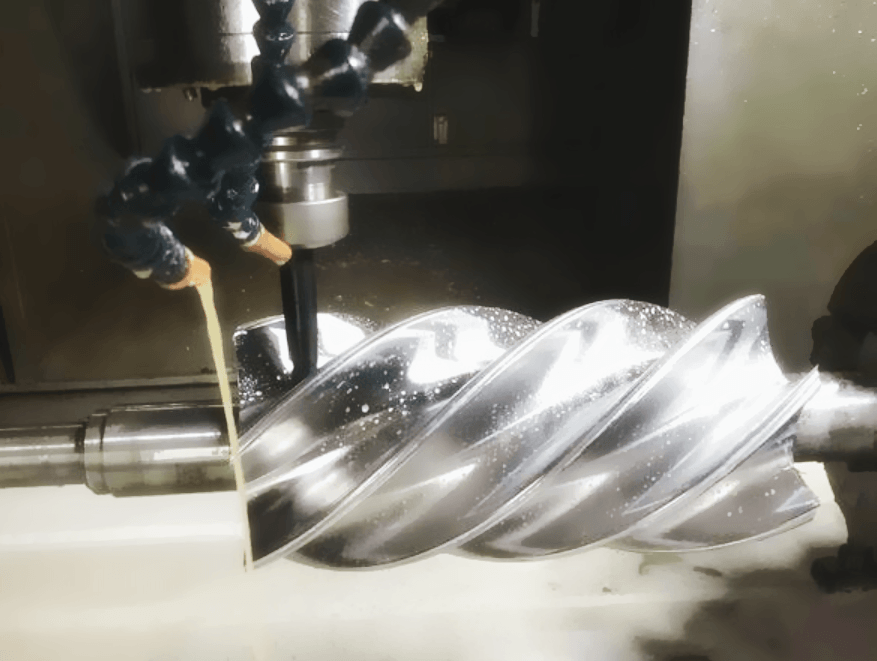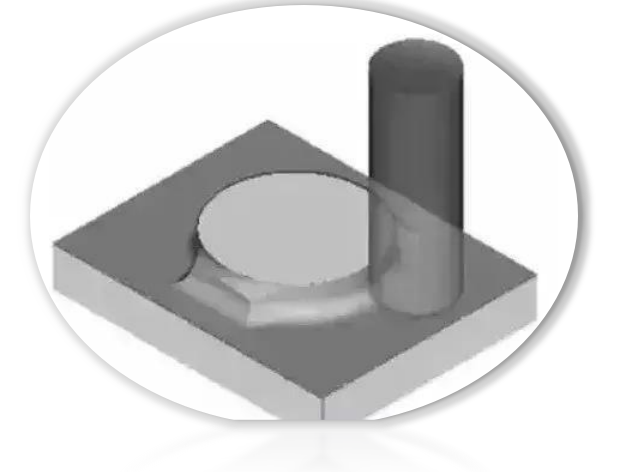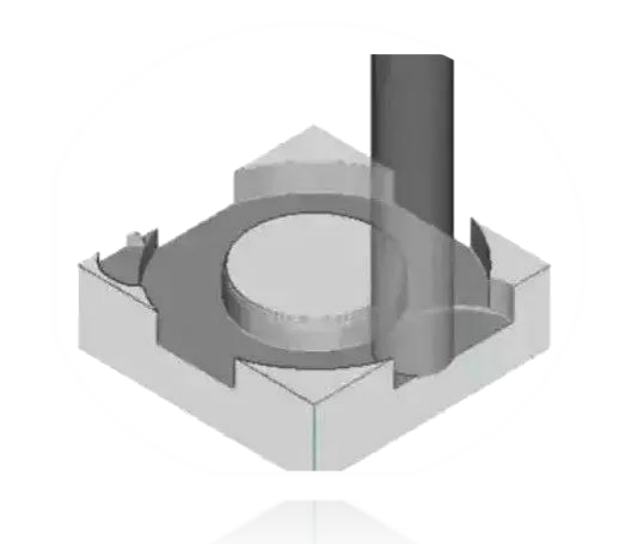
Collision, Vibration And Over-Cutting When PCD tool Machining Workpiece
When hapeen Collision, Vibration And Over-Cutting When Pcd Tool Machining Workpiece during PCD tool or other CNC tools maching workpiece,how solve these problems?
When the cutting amount of the tool is too large, in addition to the cutting edge, the tool bar also hit the workpiece. The main reasons for the collision are the unreasonable safety height setting or no safety height setting, the improper processing method, the improper use of the tool and the allowance set during the second rough machining is smaller than the first rough setting.

Cut down on the amount of knives. The smaller the diameter of the tool, the smaller the cutting amount should be.
For example, the first rough machining of the mold (the rough shape of the mold is processed for the first time), the amount of cutting per knife is not more than 0.5mm, and the amount of cutting is smaller when semi-finishing and finishing.
The contour milling mode is changed to the cavity milling mode.When the machining allowance is greater than the tool diameter, the contour machining method cannot be selected.
(1)The safety height should be greater than the clamping height
(2)In most cases, it is not possible to choose a "direct" feed and retreat method, except for special work-pieces

The margin for the second rough machining should be slightly larger than the margin for the first rough machining, usually 0.05mm larger. If the first margin is 0.3mm, the margin for the second rough machining should be 0.35mm. Otherwise, the blade may easily hit the side wall above.
In addition to the above reasons that may cause tool collisions (crashing), sometimes trimming the tool path can also cause tool collisions. Therefore, it is recommended not to trim the tool path. The most direct consequence of tool collisions is damage to the tool and work-piece, and more seriously, it may damage the machine tool spindle.
When the tool has a relatively large amplitude of vibration due to excessive force, it will cause the work-piece to over-cut and damage the tool, and when the tool diameter is small and the tool holder is too long or the force is too large, the phenomenon of vibration will be produced.
Use a larger ball cutter to clean corners or EDM deep corners.
Reduce the amount of cutting, when the processing depth is greater than 120mm, it is necessary to separate two times to install the knife, that is, first install the short tool rod processing to the depth of 100mm, and then install the extended tool rod processing below 100mm, and set a small amount of cutting.
The bouncing ( vibration) phenomenon is most easily overlooked by beginners in programming, so it should be given sufficient attention. When programming, the cutting depth and maximum machining depth should be determined based on the performance of the cutting material and the diameter and length of the tool, as well as whether electric discharge machining is required in areas that are too deep.
Over-cutting refers to the cutting of parts that cannot be cut by the tool, causing damage to the work-piece. There are various reasons for over cutting of work-pieces, mainly including low machine tool accuracy, tool collision, tool bouncing, and the misuse of large tools during programming. In addition, if the operator's knife setting is not accurate, it may also cause over-fitting.
When programming, it is necessary to be careful and meticulous. After completing the program, it is also necessary to carefully check the tool path to avoid over-cutting and other phenomena, otherwise the mold will be scrapped or even the machine tool will be damaged.
Contact: Nina Qiao
Phone: 86-13526572721
E-mail: cutting@zy-superhardtools.com
Whatsapp:86-13526572721
Add: AUX Industry,Zhengzhou City,Henan Province,China
We chat
